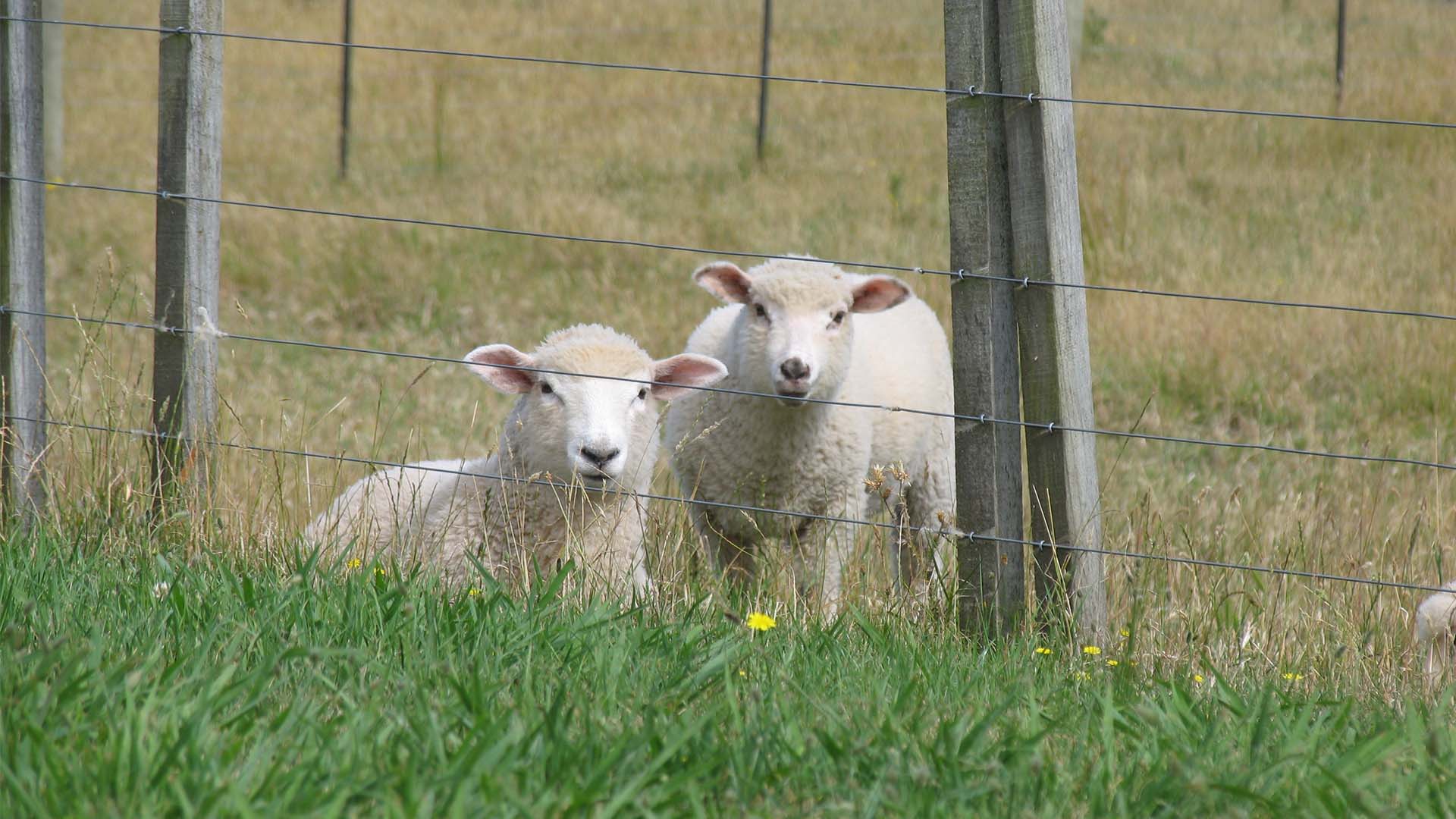
Coyotes are likely the most prevalent and successful carnivores in North America. Unlike their cousins, wolves, which are located only in certain pockets of the country, coyote populations are widespread across much of the nation.
While some livestock managers are lucky enough to have few, if any, coyote encounters, others deal with serious depredation issues from these wily creatures. A simple solution for managing livestock under the threat of coyotes does not exist. However, a combination of preventative and responsive strategies can be effective.
COYOTE DIETS
Coyotes are well known for their predatory attacks on livestock. Despite their small size, coyotes actively hunt adult sheep and goats. In fact, they cause the majority of sheep, goat and cattle predator losses in North America. When working a cattle herd, calves are almost always targeted.
In fact, young livestock, including calves and lambs, are the easiest prey for coyotes. Small dogs, domestic cats and poultry are also regular prey for coyotes.
Probably most surprising is that coyotes are also known to damage crops! For example, they are known to consume watermelon.
With so many food targets available, it’s understandable that coyotes clash so often with people. As a result, coyote culling was not uncommon until a few decades ago. As more and more environmental and wildlife protection laws were adopted, deterrent methods have been increasingly developed.

FENCING AS COYOTE DETERRENT
A good place to start your campaign against coyotes is by examining your fencing system. Both permanent and temporary fencing options to exclude predators exist, and some more effective than others.
When it comes to permanent fencing, electrified high-tensile line has been found to provide the most effective protection from predators. For this system to work optimally, a low impedance fence charger capable of maintaining 4,000 to 5,000 volts on the fence line is recommended.
WIRE RECOMMENDATIONS
To properly fence against coyotes, a variety of wire counts and wire spacing can be used, including:
- 7-wire design with 42” fence height – Deters coyotes in areas with low predator activity while still allowing deer and elk to safely pass.
- 7-wire design with 54” fence height – Use this combination to deter coyotes from calving and lambing areas with low to moderate potential for predator activity.
- 9 – 11 wire design with a 60” – 72” fence height – Highly effective design which will deter coyotes in areas with high predator activity.
It’s important to note that coyotes will also dig to reach their prey, so the lowest electric wire should be placed no more than 6 inches from the ground.

FIGHT PREDATORS WITH FLADRY
In situations where permanent fencing is not an option or animals are being moved frequently (such as in rotational grazing), fladry can be used. What is fladry? It’s a psychological perimeter barrier created by red flags hanging on a fence line. The flags flap, flutter and twist in the wind just enough to make skittish canids nervous – all that activity keeps them from crossing the perimeter line.
In studies with wolves, livestock producers in western states using this simple fencing method have been able to deter wolves for up to 60 days. In limited testing, researchers have found that electrified fladry can be even more successful than that. While most fladry studies measure the reactions of wolves, it is assumed that fladry is also effective against coyotes .
When fladry is electrified, use of a low impedance fence charger is a must. Without a low impedance charger, electrified fladry (also called turbo-fladry) can short out when the flags come in contact with trees and shrubs.
Livestock mangers should understand that fladry is only a short-term deterrent. In addition to that, fladry presents its own problems. Deploying this fencing option is labor intensive. Tangling, general availability and high installation costs are additional limiting factors to this temporary fencing option.
MORE OPTIONS TO DETER COYOTE ATTACKS ON LIVESTOCK
Since no deterrent has proven 100 percent effective at keeping coyotes away from livestock, experts suggest a multi-pronged approach: Set up an electric fence and then add extra measures. Be sure to keep these predators skittish by switching up these less permanent deterrents on a regular basis.
- Lights – Place lights around an enclosed pasture at night. Coyotes prefer to attack in the dark. Additionally, livestock may be able to spot these predators as they approach.
- Sounds – Devices that produce sounds at random times have proven effective. Even radios shown some ability to ward off coyotes for a short time. A specialty device called a Propane Exploder, which activates “mini explosions” of propane through the night, is worth checking out as well.
- “Scarecrow” items – Signs that suggest a human is still in the area overnight can make coyotes too nervous to approach. Try parking an old truck in the pasture and move it to a new spot each day.
- Guard animals – Dogs, donkeys and llamas are very effective at keeping coyotes away from livestock. There are some drawbacks though: Dogs need to be trained; llamas are vulnerable to wolves; and donkeys sometimes injure the livestock or fail to bond with them.
- Nighttime corrals – Nighttime “resting” corrals keep livestock in a small area and make them less vulnerable to coyotes. A coyote-proof corral fence and night illumination make this option even more secure.
- Noting the weather – Animal scientists have found that coyotes prefer to attack during rainfall or in fog. Staying aware of these weather conditions and taking action when such conditions exist can help you keep your livestock safe.
- Lambing and calving choices – When one of your pregnant animals is close to delivery, contain them in an enclosure close to your barn buildings. Mothers are highly vulnerable while giving birth, as are newborn animals. Try not to allow them to give birth while out on the range where they can be stalked by predators.
- Maintaining a healthy herd/flock – By keeping your herd or flock healthy, it will be better prepared to defend itself and its young from coyotes. Proper nutrition results in stronger young that are less vulnerable to predation.
KEEPING COYOTES AWAY FROM LIVESTOCK
Like all preventive predator management methods, these fencing options will only work as well as they are managed and maintained. Regular repair and maintenance of electric fencing will help to ensure fences continue to work properly. Producers should compare the economic loss to predation against the cost of the fence, expected life of the fence, and relative effectiveness of the design chosen when determining what fencing system will work best for their situation.
If you have any additional ideas for keeping coyotes away from the livestock in your pastureland, let us know in the comments below or when you visit Zareba® on Facebook. Zareba® also offers more information on fencing against coyotes and wolves in its Learning Center.
For more advice on electric fencing, as well as great deals on our electric fencing products, subscribe to the Zareba® E-Newsletter.
Looking for more ways to keep your animals safe and happy? Zareba® has answers:
- Understand fence requirements by animal.
- How to exclude predators with electric fencing.
- Make fenceline weaning work for your herd.



